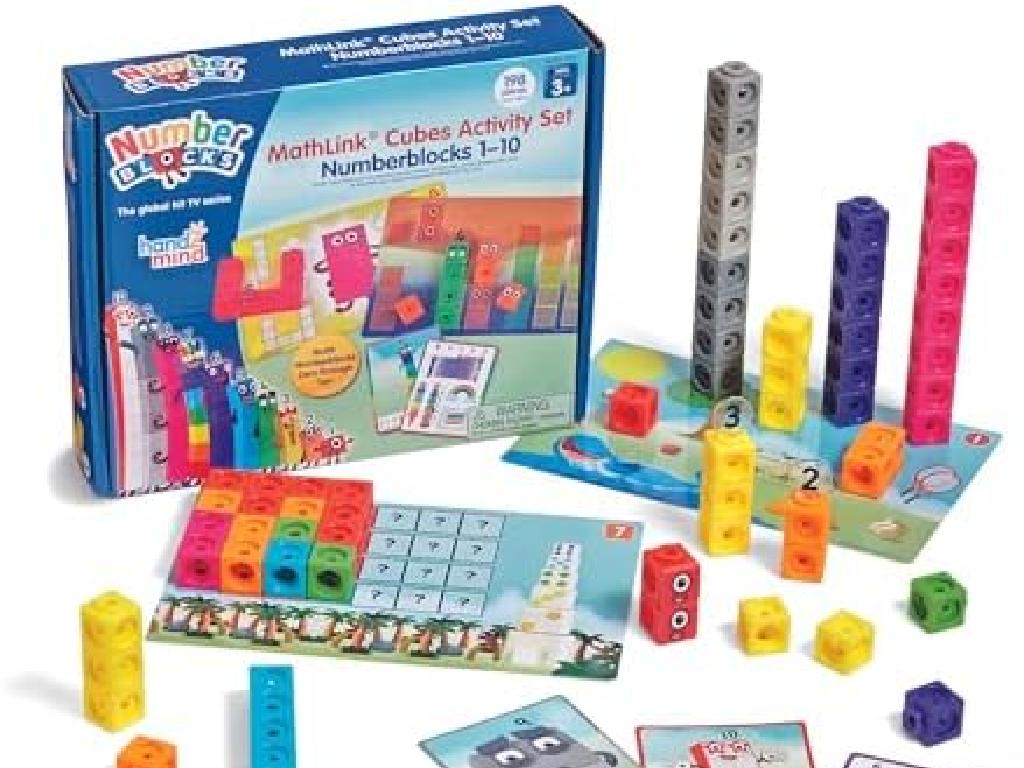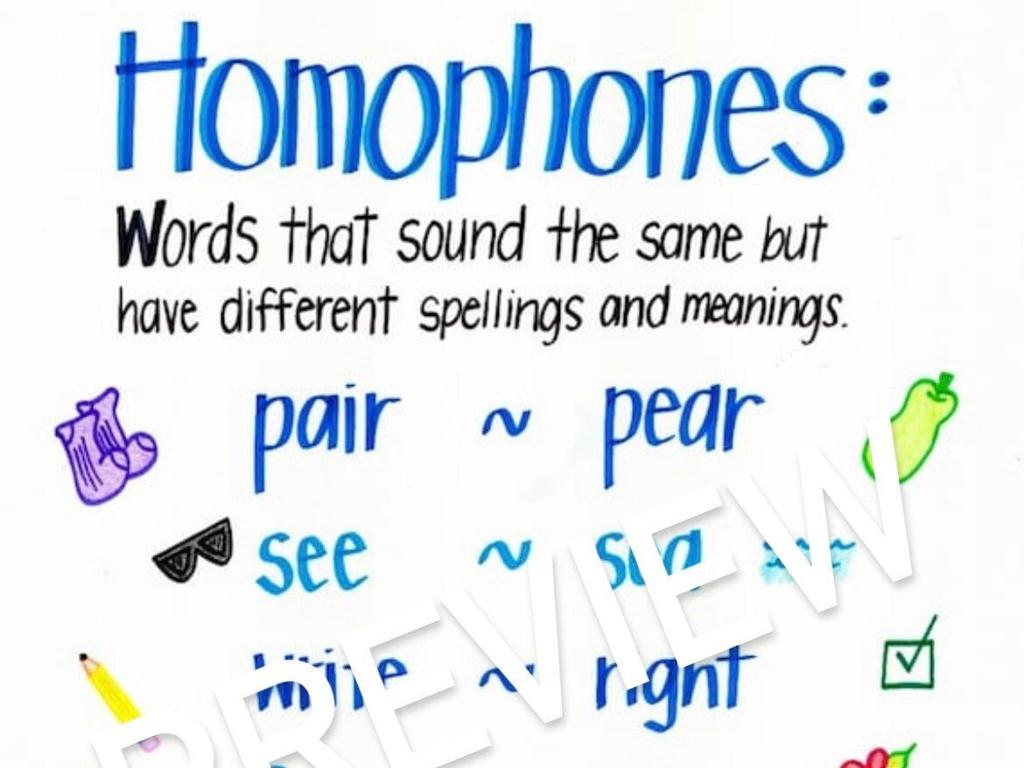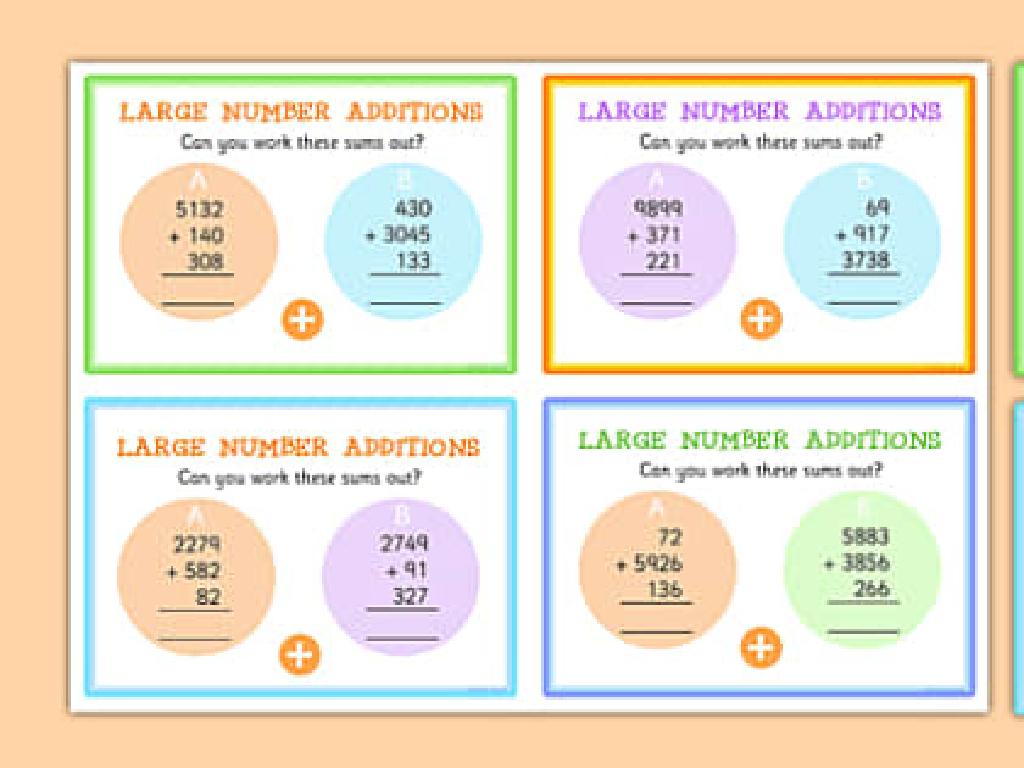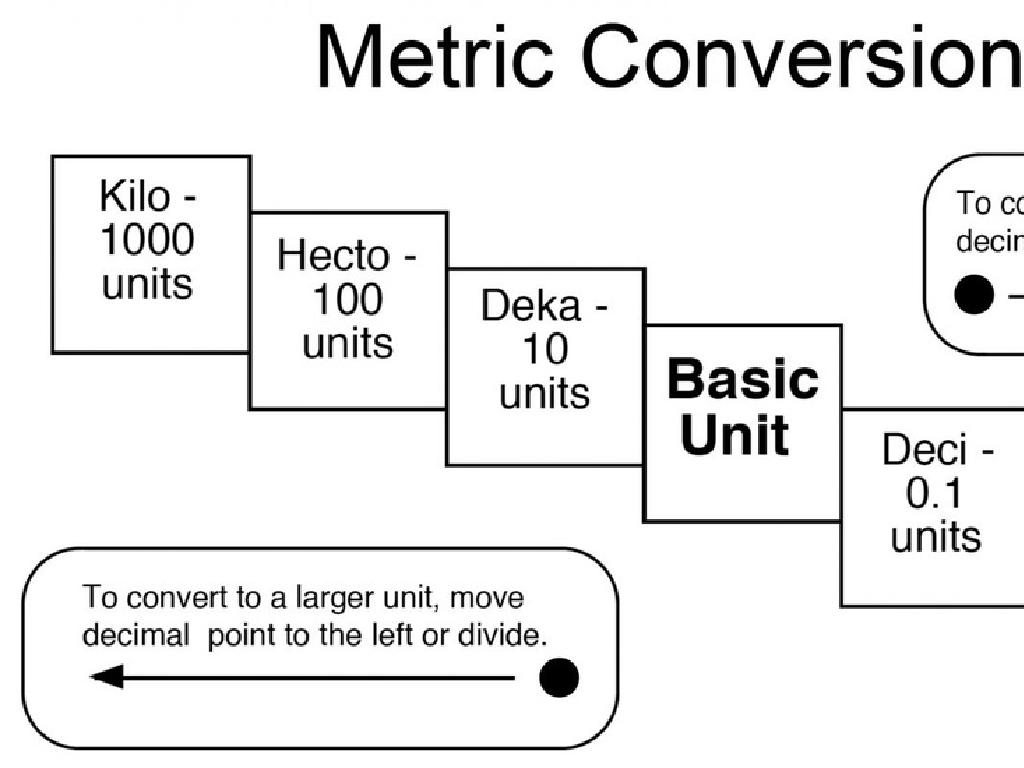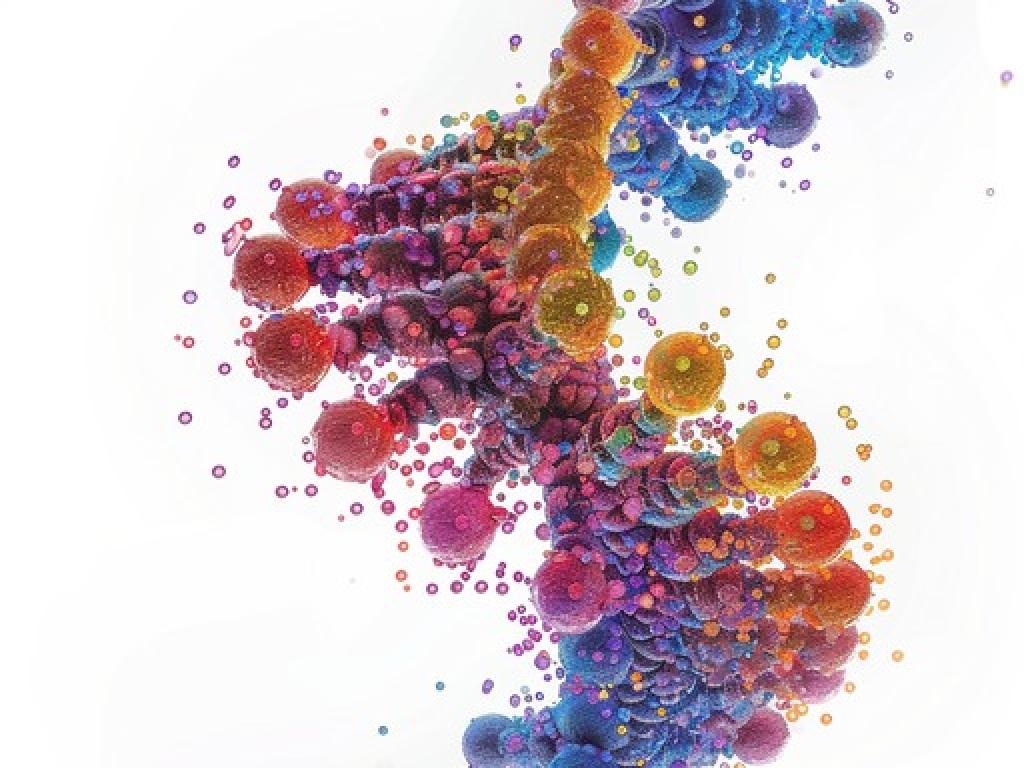How Do Plants Make Food?
Subject: Science
Grade: Third grade
Topic: Plants
Please LOG IN to download the presentation. Access is available to registered users only.
View More Content
Today’s Adventure: How Do Plants Make Food?
– Plants are nature’s food makers
– Just like a chef in a kitchen, plants make their own food!
– Photosynthesis: Plants’ food recipe
– Photosynthesis is the process where plants turn sunlight into food.
– Sunlight, water, and air needed
– Plants use sunlight, water from soil, and carbon dioxide from air.
– Plants create oxygen and glucose
– They make oxygen for us to breathe and glucose for their energy.
|
This slide introduces the concept of photosynthesis to third graders, explaining the role of plants in nature as food producers. Begin by comparing plants to chefs who create their own recipes for food. Explain photosynthesis as a recipe that requires three main ingredients: sunlight, water, and air. Emphasize that this process is essential for life on Earth as it produces oxygen for us and food for the plants. Use simple language and relatable analogies to make the concept understandable. Encourage students to think of plants as living beings that eat and breathe, fostering a sense of connection with nature.
What Are Plants?
– Plants are living organisms
– Like humans and animals, plants are alive and grow.
– Various types of plants exist
– From giant trees to tiny mosses, plants come in many forms.
– Plants are crucial for life
– They provide oxygen and food, which are essential for survival.
– Plants support ecosystems
– Plants create habitats and are key to all life on Earth.
|
Begin the lesson by defining plants as living organisms that grow and produce their own food through a process called photosynthesis. Highlight the diversity of plant life by showing pictures of different types of plants, such as trees, flowers, grasses, and mosses. Discuss the importance of plants to humans and animals, emphasizing their role in providing oxygen, food, medicine, and materials for shelter and clothing. Explain how plants are the foundation of all ecosystems, creating habitats for other organisms and maintaining the balance of nature. Encourage students to think about how plants affect their daily lives and the environment.
The Ingredients for Plant Food
– Sunlight: Plants’ Energy Source
– Sunlight helps plants convert water and CO2 into food.
– Water: Essential for Plant Life
– Plants absorb water through roots to stay healthy and grow.
– Carbon Dioxide: Air for Plants
– Plants take in CO2 from the air through tiny holes in leaves.
– How Plants Make Their Food
|
This slide introduces the basic ingredients plants need to make their own food through a process called photosynthesis. Sunlight is the key energy source that allows plants to convert water and carbon dioxide into glucose, a type of sugar that plants use for food. Water is absorbed by the plant’s roots and is necessary for the plant’s overall health and growth. Carbon dioxide, a gas found in the air, is taken in through small openings in the leaves called stomata. Understanding these ingredients sets the stage for learning about the photosynthesis process in more detail. Encourage students to think about how these elements are like ingredients in a recipe that plants need to survive and grow.
Photosynthesis: The Recipe for Plant Food
– What is Photosynthesis?
– It’s how plants make their own food using sunlight!
– Chlorophyll: Magic in Leaves
– Chlorophyll makes leaves green & helps catch sunlight.
– Photosynthesis Simple Equation
– 6CO2 + 6H2O + sunlight = C6H12O6 + 6O2
– Sunlight into Food!
– Plants use sunlight to turn water and CO2 into sugar and oxygen.
|
Photosynthesis is a crucial process that allows plants to create their own food using sunlight, which is captured by a green pigment in the leaves called chlorophyll. The simple equation representing photosynthesis is 6CO2 (carbon dioxide) + 6H2O (water) + sunlight energy = C6H12O6 (glucose/sugar) + 6O2 (oxygen). This equation should be explained as a recipe that plants use to convert sunlight into energy they can use to grow. Emphasize the importance of sunlight in this process and how it’s similar to a chef using ingredients to make a delicious meal. This analogy helps students understand the concept of photosynthesis in a relatable way.
The Magic of Making Food in Plants
– Plants use sunlight to create food
– Sunlight is like a power source for plants to make their own food.
– Water’s journey through plants
– Water travels from roots to leaves, helping make food.
– Plants breathe in air for food
– Plants use carbon dioxide from the air in making food.
– Photosynthesis: A magical process
|
This slide introduces the concept of photosynthesis to third-grade students, explaining how plants make their own food using sunlight, water, and air. Start by discussing how sunlight is essential for plants, acting like energy that helps them produce food. Then, explain the role of water in photosynthesis, how it moves from the roots up to the leaves. Next, cover how plants take in carbon dioxide from the air. Emphasize that all these elements come together in the leaves to create food for the plant through a special process called photosynthesis. Use simple language and relatable analogies, such as comparing the plant making food to a chef preparing a meal, to help students understand these complex processes.
Why Is Photosynthesis Important?
– Plants are food producers
– They make their own food and feed others in the food chain.
– Oxygen: Essential for breathing
– Plants release oxygen we need to breathe during photosynthesis.
– Maintaining nature’s balance
– Photosynthesis helps keep the levels of oxygen and carbon dioxide stable.
– Photosynthesis sustains life
|
Photosynthesis is a crucial process that allows plants to create their own food using sunlight, which in turn supports the entire food chain. As primary producers, plants serve as the foundation for all other life forms by providing nutrients. They also release oxygen as a byproduct, which is vital for the survival of most living organisms, including humans. This process plays a significant role in maintaining the balance of gases in the atmosphere, ensuring that life on Earth can thrive. During the class, we can discuss the importance of plants in our daily lives and how they help sustain various ecosystems. Encourage students to think about how their own lives are connected to plants and the process of photosynthesis.
Class Experiment: Observing Photosynthesis
– We’ll do a photosynthesis experiment
– List of materials we’ll use
– Beakers, water, plants, sunlight, and CO2 are needed
– Make predictions about the experiment
– What do you think the plant will do?
– Observe changes during the experiment
– We’ll watch the plant to see how it makes food
|
This slide introduces a hands-on experiment to help students observe photosynthesis in action. The experiment will demonstrate how plants use sunlight, water, and carbon dioxide to create their food. Students will be provided with a list of materials, including beakers, water, plants, and a source of carbon dioxide. They will be asked to make predictions about what they think will happen during the experiment. As the experiment progresses, students will observe any changes and discuss the results. This activity will help solidify their understanding of the photosynthesis process. For the teacher: Prepare different stations for the students to conduct the experiment in small groups. Ensure safety measures are in place when handling the materials. Have a discussion and reflection session after the observations where students can share their predictions and conclusions.
Class Activity: Be a Little Leaf!
– Role-play photosynthesis
– Dress up as parts of a plant
– Wear green aprons to represent leaves
– Act out how plants use sunlight
– Use sun hats to symbolize sunlight energy
– Demonstrate water absorption
– Pretend to absorb water with spray bottles
|
This interactive activity is designed to help students understand the process of photosynthesis by role-playing. Each student will represent a leaf, wearing green aprons to signify their role. Sun hats will represent the sun, which is essential for photosynthesis. Students can use water spray bottles to mimic the absorption of water through roots. As they act out the process, guide them through each step: absorption of sunlight, intake of water, and the ‘production’ of food (glucose). This kinesthetic approach aids in solidifying the concept of photosynthesis in young minds. Possible variations of the activity could include students role-playing as different parts of the plant or the sun, and even the carbon dioxide and oxygen molecules involved in the process.
Recap: How Plants Make Food
– Plants make food through photosynthesis
– Using sunlight, plants turn water and CO2 into food
– Photosynthesis is vital for Earth’s life
– It produces oxygen we breathe and sustains food chains
– Key terms: Photosynthesis, Chlorophyll, CO2
– Photosynthesis: process of making food. Chlorophyll: green pigment. CO2: gas plants use.
|
In today’s lesson, we learned that plants produce their own food through a process called photosynthesis, which requires sunlight, water, and carbon dioxide (CO2). This process is crucial as it generates oxygen, which is essential for most life forms on Earth, and forms the base of food chains. We also reviewed important terms such as ‘photosynthesis,’ the chemical reaction plants use to make food; ‘chlorophyll,’ the green pigment in plants that captures sunlight; and ‘carbon dioxide,’ a gas from the air that plants use to make food. Encourage students to remember these terms and the overall process of photosynthesis, as it’s fundamental to understanding plant biology and ecosystems.
Homework Challenge: Plant’s Food Factory
– Complete the water droplet worksheet
– Trace how water travels through a plant
– Draw and label plant parts
– Show roots, stem, leaves, and where food is made
– Explain how plants make food
– Photosynthesis: Plants use sunlight to make food
– Discuss your learning with family
|
This homework is designed to reinforce the concepts learned about how plants make their own food through photosynthesis. The worksheet will guide students to trace the path of a water droplet through a plant, helping them understand the role of water in food production. Students should draw and label the main parts of a plant, such as roots, stem, and leaves, and indicate where photosynthesis occurs. Encourage them to explain the process in their own words and share their findings with their family, which will help solidify their understanding and give them the opportunity to teach others.

